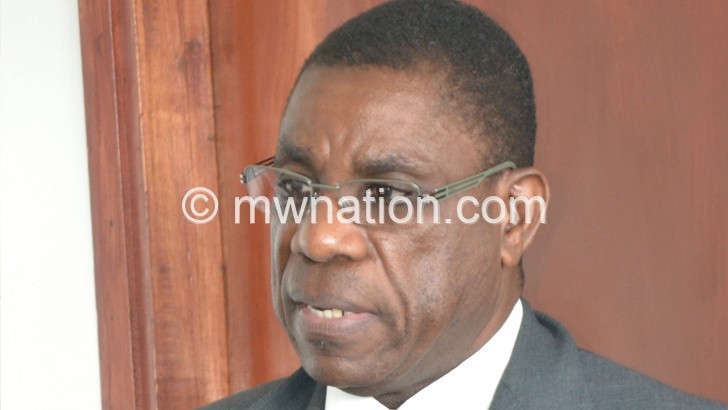Electricity Supply Corporation of Malawi Limited (Escom) has proposed a 69.7 percent tariff to help it finance operational and capital requirements for the period 2023 to 2027.
If Malawi Energy Regulatory Authority (Mera) approves the proposal wholesale, it will mean that electricity consumers will pay an average of K177.26 per kilowatt hour (kWh) from the current average of K104.46/kWh.
Justifying its 2023-2027 Electricity Base Tarrif Application, Escom says to deliver on customer and stakeholder priorities over the four years, it will need K1.85 trillion.
It said this will comprise power purchase costs pegged at K915.31 billion, single buyer licensee costs at K22.49 billion, transmission licensee costs at K95.00 billion, system and market operator licensee costs of K40.68 billion, distribution licensee costs at K552.09 billion and stabilisation fund projected at K74.14 billion. There are also levies at K93.28 billion and bad debts worth K53.68 billion.

Reads the Escom application: “This increase is mainly due to power purchase costs which include cost to purchase power from Mozambique-Malawi Interconnector and Serengeti Solar Plant; Inclusion of the wheeling charges for the Interconnector, introduction of the stabilisation fund and efforts to improve service delivery to customers.
“Additionally, the devaluation of the kwacha over the years, with a major devaluation in May 2022 by the Reserve Bank of Malawi, has contributed to the significant increase in total costs.”
Escom said in building its 2023-27 business plans which have informed the proposed tariff adjustment, it took into account suggestions and proposals from its large customers and key stakeholders, including Ministry of Energy, Mera, Malawi Confederation of Chambers of Commerce and Industry (MCCCI), Economics Association of Malawi, Society of Accountants in Malawi, Consumers Association of Malawi (Cama), Miners Association, industrial customers such as Illovo Sugar (Malawi) plc, Blantyre Water Board, Hard Talk Energy and Sunbird Tourism plc.
The application for the tariff increase is set to be a successor base tariff to the one implemented from 2018 to 2022 and is a significant reduction from the 99.9 percent Escom and the now dissolved Power Market Limited (PML) jointly proposed last year.
In January this year, Mera asked Escom to revise its application for the proposed 99 percent electricity tariff hike following the dissolution of PML and the subsequent transferring of the single buyer licence to the State power utility.
In August last year, Escom and the dissolved PML submitted a 99 percent tariff hike proposal to Mera upon the expiry of the 2018-2022 base tariff schedules.
The proposed 99 percent hike, according to the two parastatals, was meant to cover another four year from 2023 to 2026.
In the 2022-26 Electricity Base Tariff Application, Escom and PML wanted electricity tariffs to be hiked by 80.75 percent from the current K104/kWh to K187.98/kWh in the first year of implementation.
Meanwhile, Mera is scheduled to conduct public hearings on the application submitted by Escom to review the electricity base tariff covering generation, single buyer, system market operator, transmission and distribution activities to be implemented up to 2027.
“The public hearings are scheduled for July 2023 in Blantyre, Lilongwe and Mzuzu,” said Mera in a statement.
In an interview yesterday, Cama executive director John Kapito said the public will need to know what has become of the agreed key performance indicators in the first tranche and which one were achieved.
He said: “The regulator should guide the public to understand what went wrong or right and that will form the basis for people to approve or reject the new tarrif application.”
MCCCI president Lekani Katandula in a separate interview last evening observed that everyone wants reliable services from both Escom and the water boards, as such, supports tariffs that enable them to recover their costs fully.
“We hope, however, that the boards and managements of these entities are fully cost conscious always optimising their operations to minimise the adverse impacts of high tariff increases especially now when inflation is already quite high,” he said.
Economist Bond Mtembezeka observed that the only relief at this point stems from the fact that the hike is staggered across four to five years.
He said: “I think as a country we are pressed between a hard rock and a hard place. On one hand escom needs such a raise to deliver on it’s plans. On the other hand, we are in a precarious macroeconomic position and any increases in costs of such basic services will undermine economic welfare of people.”
Malawi University of Business and Applied Science associate professor of economics Betchani Tchereni said Escom needs to operate without troubles, observing that if the tariffs are not provided, the utility supplier may fail to supply electricity properly.
“This therefore is a necessary evil,” he said.
In an earlier interview on the sidelines of the Malawi Electricity Access Project tour by the Parliamentary Committee on Climate Change and Natural Resources, committee chairperson Werani Chilenga said they cannot advocate for an electricity tariff hike when Malawians are going through tough economic times.
He said: “People’s businesses have collapsed. If you look at the way people are accessing electricity, it is like there is no electricity that people are paying for or we can have a tariff increase for.
“They have sent the proposals to Mera, the best is for us to wait.”
The fresh electricity tarrif hike proposal comes against a background of water boards implementing an average 50 percent tarrif hike from June 1 this year.
In line with the 2017 Tariff Methodology, once every four years, Escom submits a base tariff application to Mera for consideration and approval.
Source: The Nation_Wednesday, June 14, 2023_Grace Phiri
